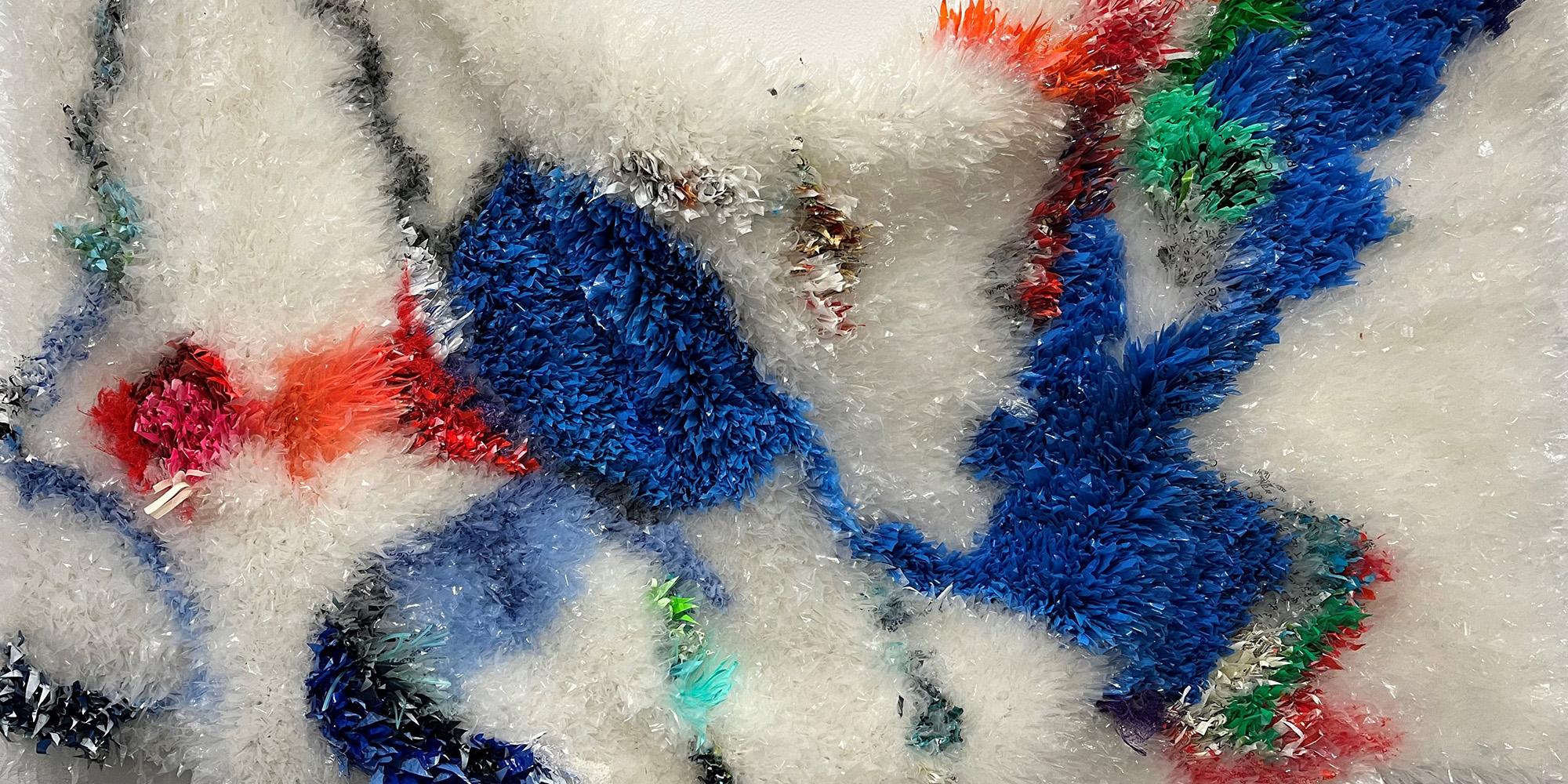September 22–29 | Free
The annual climate event, Climate Week NYC, returns with over 600 in-person and virtual offerings to accelerate progress and advocate for ongoing climate change awareness and solutions. The Seaport Museum is joining climate-conscious organizations in support of this city-wide initiative by presenting a free public art exhibition and an artist talk. Climate Week NYC is organized by the Climate Group in conjunction with the United Nations and the City of New York.
Learn how you can come enjoy the Seaport Museum’s free public art exhibition and artist talk below.
Please Note This is a Past Program, Event, or Activity
You are viewing an archived page for a program, event, or activity that has already taken place. In most cases these pages are no longer actively maintained and because of that may contain inaccurate or out-of-date information. These pages are left publicly viewable to preserve institutional memory and to allow the public to learn more about the types of programs, activities, and content created and made available by the South Street Seaport Museum throughout its history.
Art at the Edge Exhibition
September 22–October 5 | Pier 16 | Free
In partnership with Waterfront Alliance and Seaport Entertainment Group, the Museum presents a new, temporary exhibition that harnesses the power of art to call attention to the dangers of a rising sea level and the urgent need for greater coastal resilience.
In this outdoor installation that will be on view throughout Climate Week, three local artists will present climate-focused work to inspire, inform, and engage the public about the urgency of the climate crisis.
No registration needed. This free exhibition is outdoors at Pier 16 and walk-ups are welcome.
“Tide” (2024) by Michael Krondl
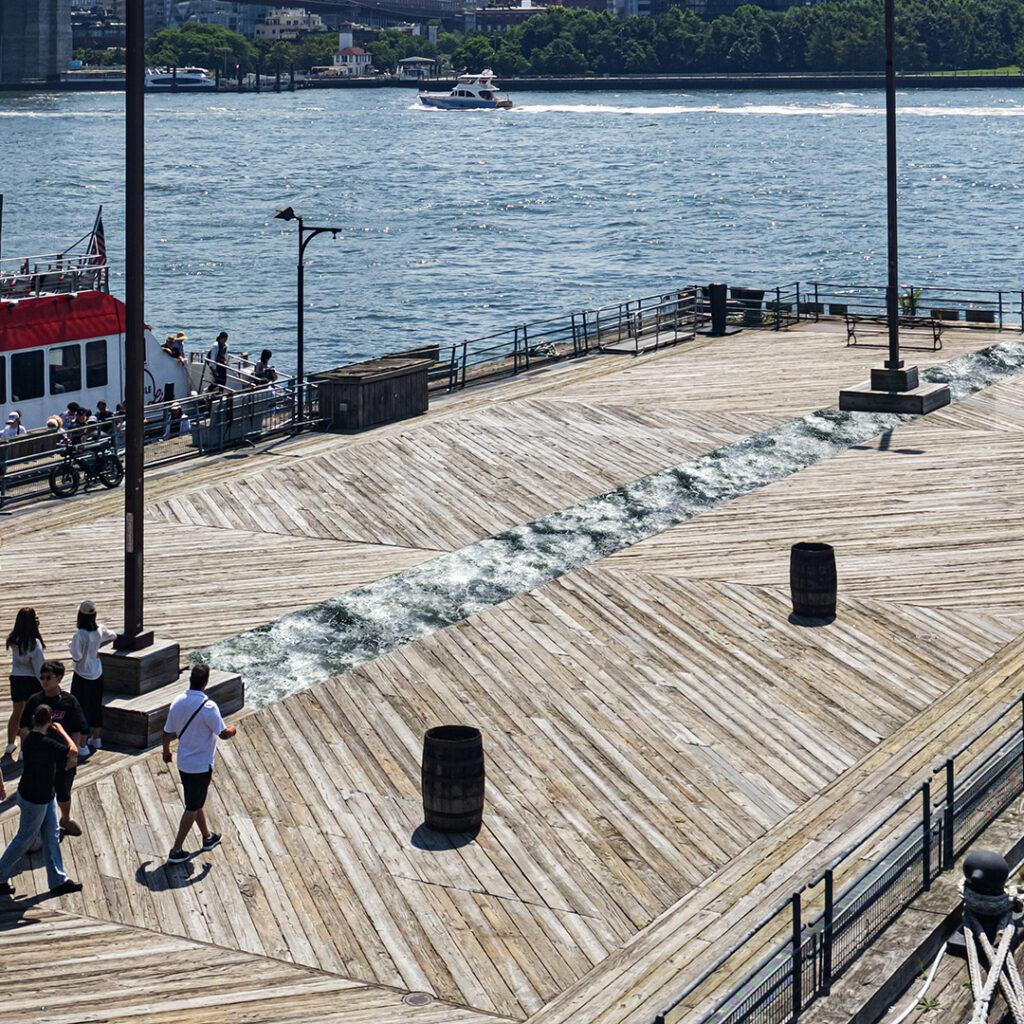
The subject of Michael Krondl’s work is the troubled relationship with the natural world we face as a society and as individuals. Many of his pieces have referenced the consequences of the climate emergency, primarily focusing on the impact of water and drought.
“Tide” interjects a (virtual) tear or crevice into the center of Pier 16, so that the East River appears to be bubbling up and over the surface—as it undoubtedly could with rising sea levels. Viewers will physically participate with the artwork by being put into a situation of having to cross this break in time, this snapshot of the future.
While the work clearly addresses the climate crisis, Krondl is less interested in eliciting a rational, reasoned response from the audience. Instead, he is looking for a personal, physical—even visceral—reaction from the viewer that bypasses higher intellectual functions and goes directly for the midbrain. His intent is to create an intersection of the somatic and the conceptual where human frailty isn’t merely theory but a potential and immediate danger.
“Tide” is a installation placed on the wooden deck at the eastern end of Pier 16. The image is printed on vinyl and attached to the surface of the Pier.
“Anxiety Tower” (2024) by Sari Nordman
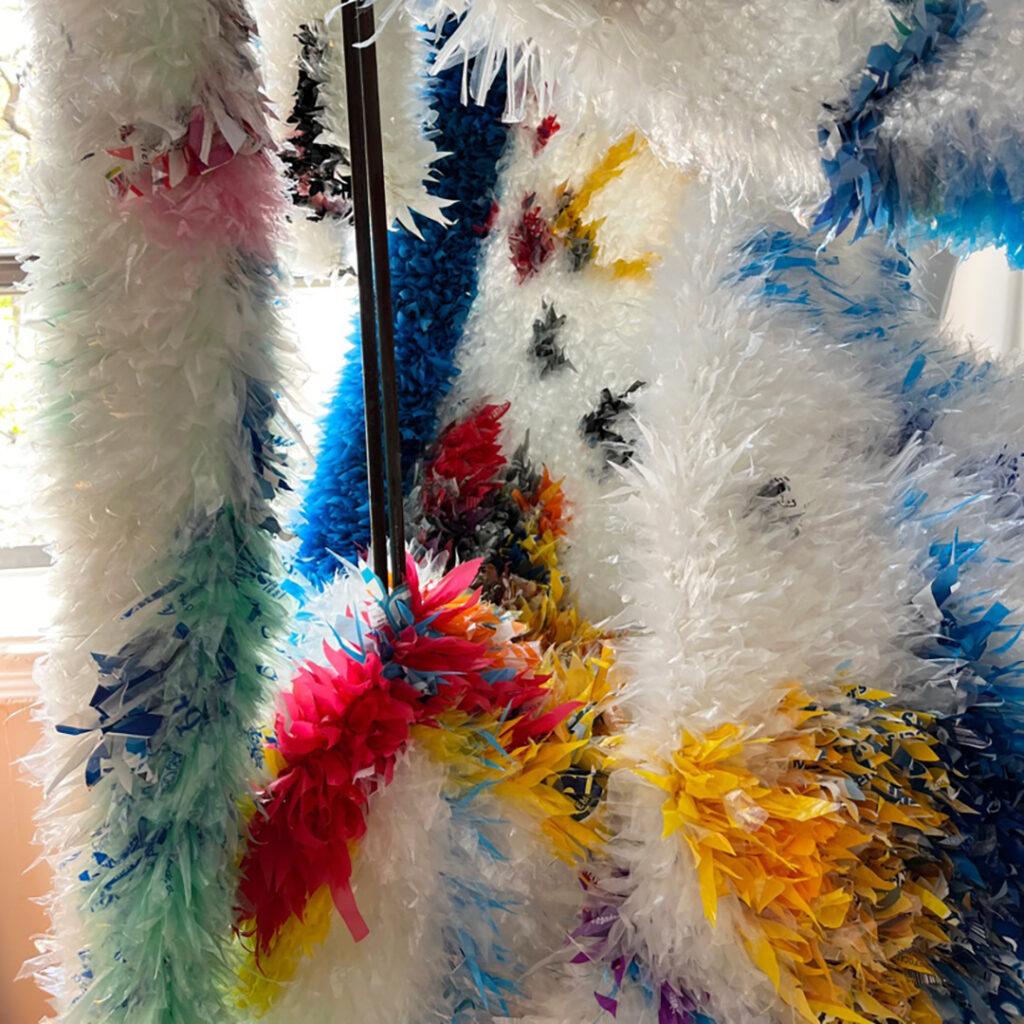
This fiber-arts installation discusses the problems of single-use plastics. The tapestries in the installation are made using recycled plastic film, some of them communally-made. The project by Sari Nordman seeks to elevate public awareness of the single-use plastics problem, advocate for people to minimize their use, and consider creative recycling and repurposing solutions.
The title “Anxiety Tower” refers to eco-anxiety addressing humanity’s ability to invent durable and inexpensive products that can serve many in multiple ways, as well as its inability to utilize a product’s full lifecycle thus burdening nature, waterways and people. For Nordman, the title also refers to the calming, positive effects of fiber-arts making. The hand crafts process is slow and steady, and becomes meditative. Her anxieties subside and are interwoven with the tapestries.
“Anxiety Tower” is fiber-art free-standing sculptural installation made of recycled materials and placed on Pier 16, close by the Museum’s lightship Ambrose.
“Shadows at the Water’s Edge” (2024) by Singha Hon and Denise Zhou
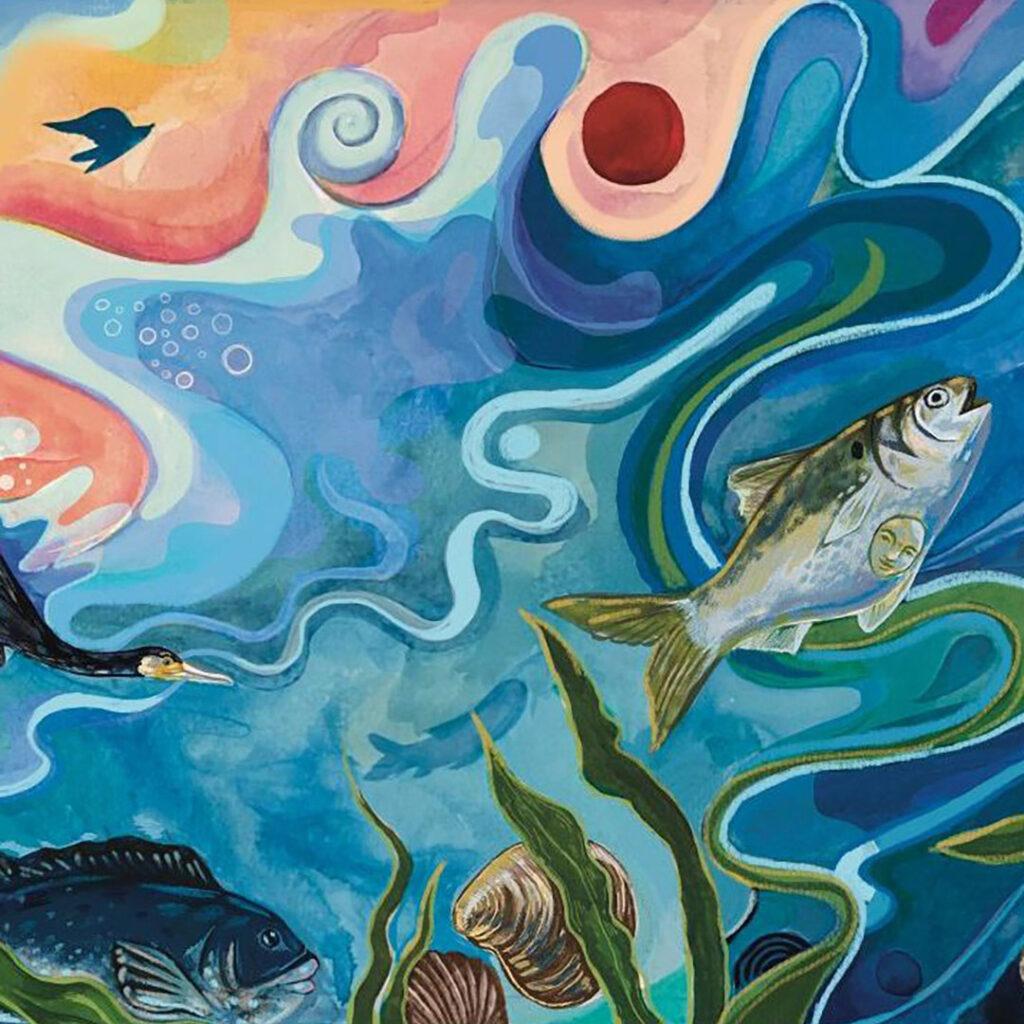
“Shadows at the Water’s Edge” is a collection of windows into what was, and what could be, in the area we know today as the Seaport. Draped along the railings of Pier 16, haunting, speculative storytelling elements stitch together layers of colonial and capitalist violence that have amassed to lay waste to air, water, and land. “Shadows” invites passersby to contend with the necessity of reorienting our relationship to the natural world—severing ourselves from exploitation, ownership, and profit, and inviting collective responsibility, interconnectedness, and repair.
“Shadows” is an outdoor banner art piece draped along the railings of Pier 16, close to the Museum’s schooner Pioneer.
Climate Art Panel Discussion
September 26 | 6pm | Wavertree | Free
Join the Art at the Edge artists in conversation with professional community climate resilience planner, Carly A. Foster, and moderator Mackenzie Pope, the Director of Development at the Waterfront Alliance, for a free public panel discussion.
Together, the panel will discuss how art helps translate difficult climate concepts for the general public and spurs action. In addition, the artists will share how artists support the work of climate activism and which climate issues would be fruitful for creative exploration. Sign up today to join this lively exploration of how we can better bridge the connection between artists and needs for new major infrastructure in communities.
This program is presented in partnership with the Seaport Museum, Waterfront Alliance, and Seaport Entertainment Group. Registration is encouraged but walk ups are welcome.
Extend Your Visit
To extend your visit and see more that the Museum has to offer, ask Museum staff about our Pay What You Wish General Admission tickets at the checkin tent.
General Admission includes access to all current exhibitions on view in the introduction gallery space at 12 Fulton Street and access to the 1885 tall ship Wavertree. Free timed tickets for a tour of the 1908 lightship Ambrose are available separately at no additional cost.
The 2024 sailing season will come to an end on Sunday, October 6! There are still tickets available to sail New York Harbor on the 1885 schooner Pioneer and 1930 tugboat W.O. Decker and range from $15–$70.
About the Artists
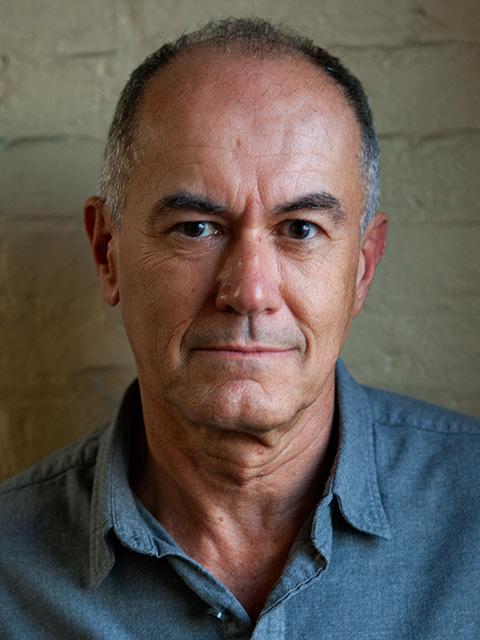
Credit: Hratch Arbach
Michael Krondl is a Czech-born, New York-based installation artist. His site-specific pieces typically use photographs of fragments of nature or the local environment. These are then manipulated (though both digital and analog means) to create very large-scale images and, in turn, mounted on walls, billboards, screens and even floors in such a way that they transform space and architecture. Many of his works focus on environmental issues and the climate emergency.
His work has been exhibited at both private and public galleries in Canada, Czech Republic, Germany, the Netherlands as well as the United States. He has also exhibited his installation pieces in numerous public venues, including the Palmovka Synagogue in Prague, Socrates Sculpture Park in Long Island City, Art Omi and the Katonah Museum in upstate New York, Colorado Springs and others. His permanent public artwork can be seen in the New York City Subway, Surrey (British Columbia), Greenville-Spartanburg Airport and Vail, Colorado.
Krondl is a recipient of many grants, most recently a Canada Council grant to explore rising sea levels in Nova Scotia. He is a graduate of the Cooper Union (BFA) and the CUNY Graduate Center (MLS).
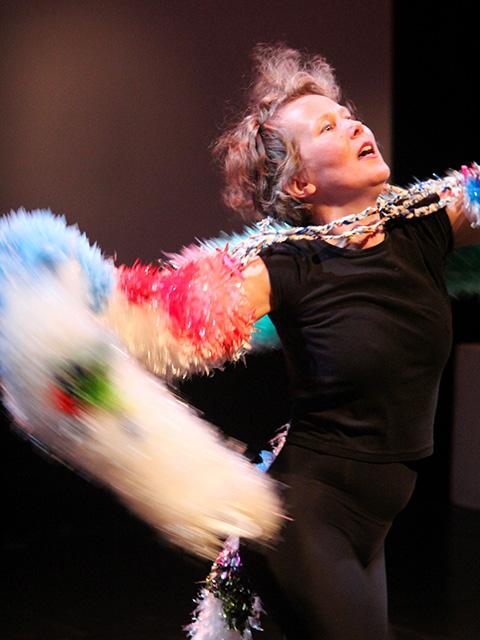
Credit: Walter Pofeldt
Sari Nordman, a Finnish interdisciplinary artist and educator, creates public art projects, video works and dance performances. Many of her projects have been informed by climate change and respond to environmental social justice issues. To amplify diverse voices from around the world her projects often involve social engagement. She engages people through interview processes, photography and fiber-arts making.
She has exhibited her works for Jamaica Center for Arts and Learning (Jamaica Flux) and King Manor Museum, and with Shared Dialogue, Shared Space (SDSS,) New York. She is a recipient of awards from Brooklyn Arts Council, Finlandia Foundation, and New York State Council on the Arts. She has discussed her projects, and the environmentalism and social engagement in her process in panels at The John F. Kennedy Center for the Performing Arts and Hirshhorn Museum, Washington DC. She holds an M.F.A. from NYU/Tisch School of the Arts.
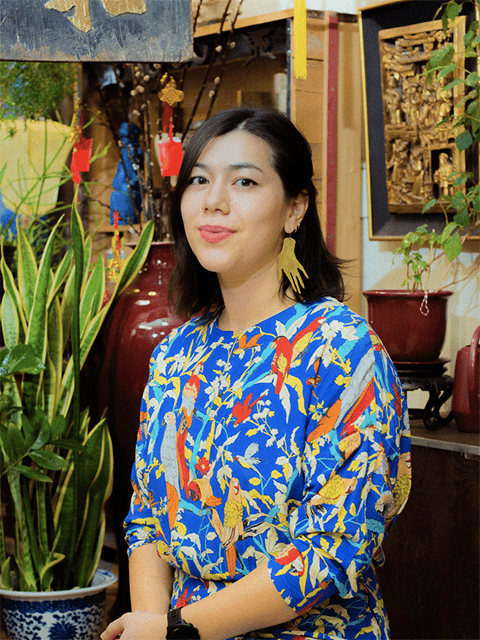
Credit: Marion Aguas
Singha Hon is an artist, educator, and illustrator born and raised in New York City. She studied at Bates College, receiving a B.A. in arts and visual culture and a B.A. in theater. She was the fourth artist-in-residence at the W.O.W. Project in 2019 and continued to work with them through the Creatives Rebuild Artist Employment Program through 2022 to 2024.
As an artist and illustrator, she has created work for organizations such as the ACLU, the People’s Paper Co-Op, MoMA, Womanly magazine, and O+ Positive. She has created murals and large-scale public art pieces which you can find in Kingston, N.Y. and in downtown NYC.
As an educator, she has taught at organizations including the W.O.W. Project as well as Abrons Arts Center, leading intergenerational workshops on subjects ranging from ceramics, cyanotype, portraiture, and mask making.
Through painting, illustration, and sculpture, she is interested in exploring the human-animal relationship, and how the way we think about and connect to the natural world can inform how we feel about our community and ourselves.
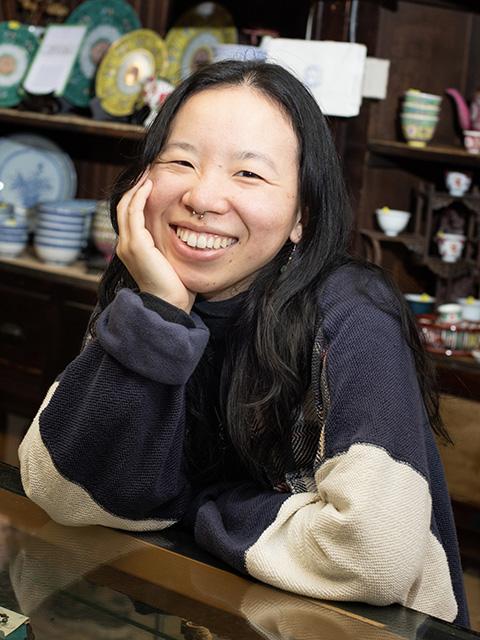
Credit: Marion Aguas
Denise Zhou is a cultural worker based in Brooklyn, New York, activating storytelling for political education, youth, and community power, and a reclamation of a people’s culture.
Their work, which spans writing, film, sculpture, print, and public programming, engages with the transformation of relationships through grief, the balance of self with the collective, and possibilities of future. Her projects have been presented at Tribeca Film Institute, Brooklyn Museum, Green-Wood Cemetery, and community events across New York City.
About the Speakers
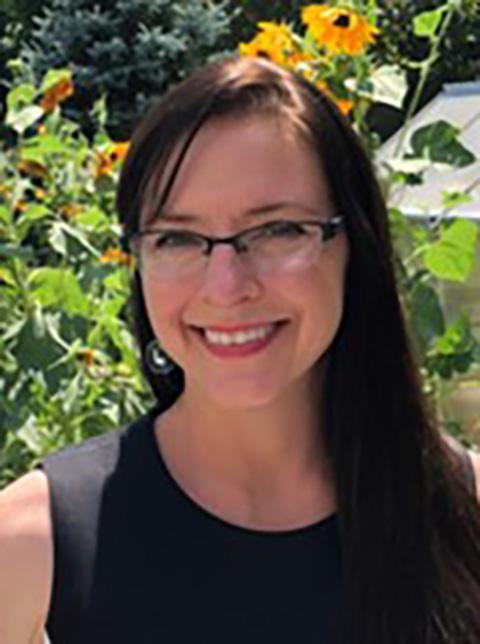
Carly A. Foster is Arcadis’ national water management practice director and founder of Arcadis’ national funding team. Foster is a professional community resilience and infrastructure planner and funding specialist by trade, and is also a local elected official in her hometown of Warwick, N.Y.
She has 20 years of experience working with private business, infrastructure (like wastewater and hospitals), and community members to develop policies, programs, and projects to manage risk and improve resilience and quality of life.
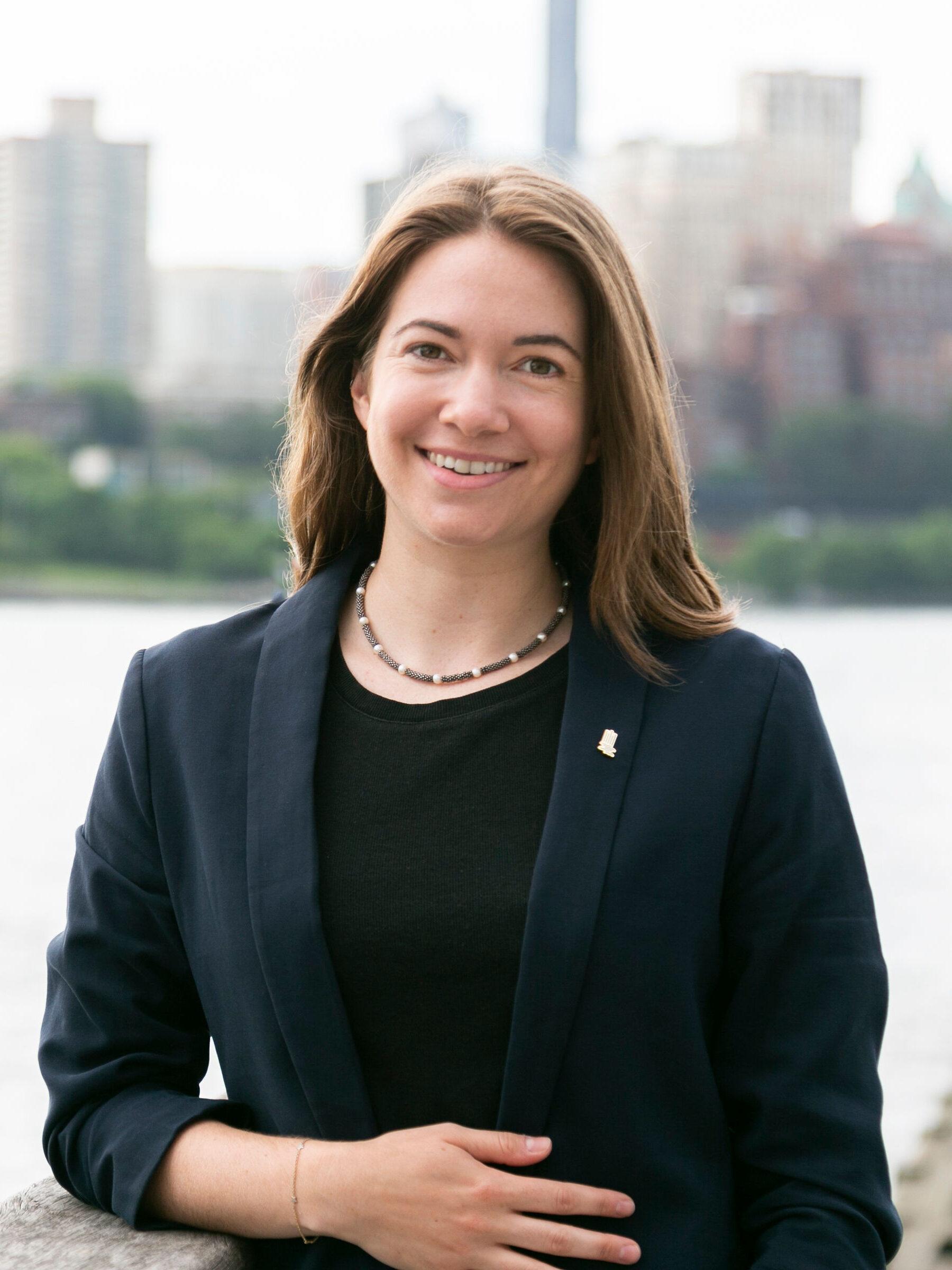
Mackenzie Pope is the Director of Development at the Waterfront Alliance, where she leads the organization’s fundraising operations and develops sustainable and diverse funding opportunities to support the organization’s mission and programs.
Pope joined the Waterfront Alliance with six years of experience in nonprofit development and environmental advocacy. Prior to joining, she worked as Field Director for Clean Water Action Maryland, Development Manager for The River Project, and most recently the Development Associate at NADAP. She earned a minor in political science and a bachelor’s degree in environmental studies with a concentration in sustainable development from the University of Colorado at Boulder. Based in New York City, she is passionate about preparing the region for climate change and creating more equitable waterfronts for all to enjoy.
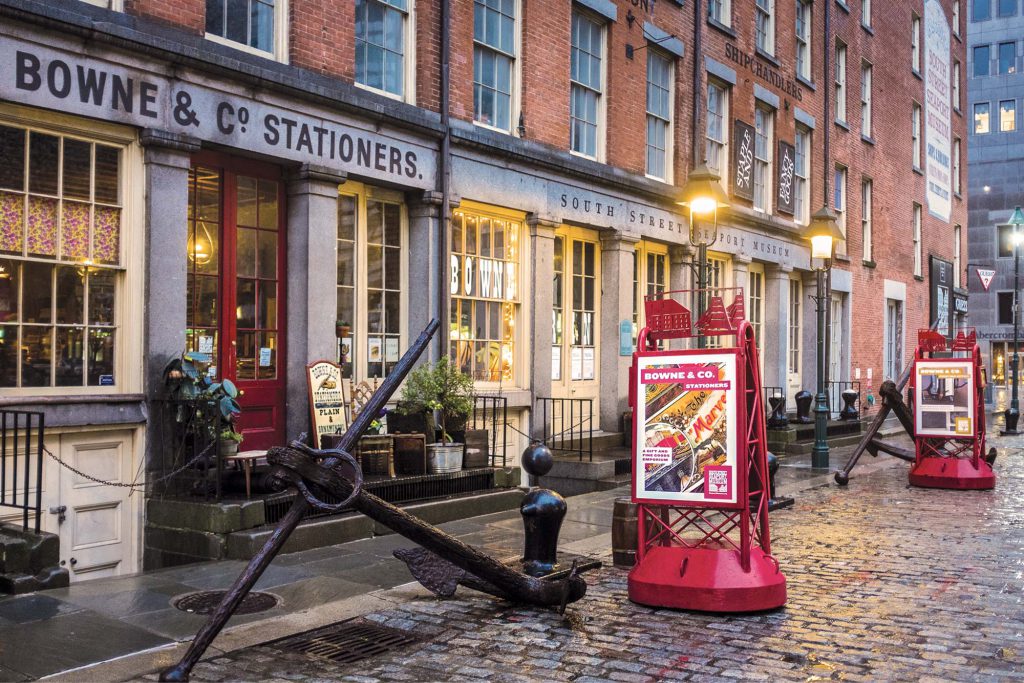
Ready for more?
Head over to our Programs and Events page to see what else is happening at the Museum. Sign up for an upcoming talk, learn more about visiting Wavertree, or explore our virtual offerings.
